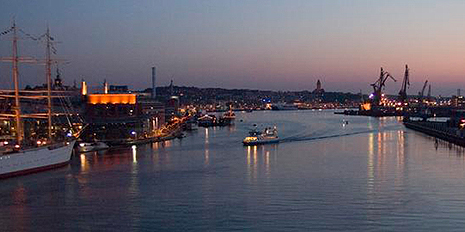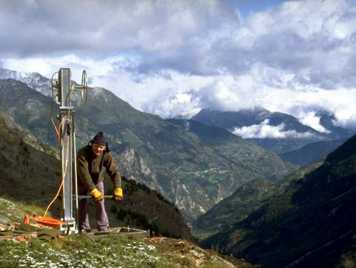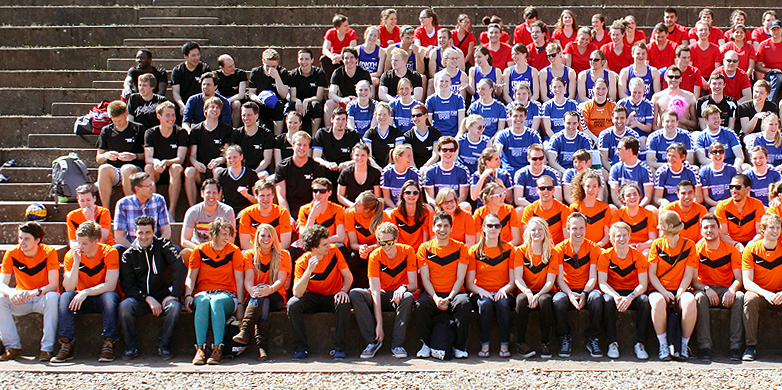New ideas for the “IDEA League”
With the Swedish Chalmers University, another top university has joined the “IDEA League”. This European university grouping is aiming to cooperate even more closely, while its joint doctoral study programme is entering its second round.

Since the results of the referendum on 9 February, Switzerland’s relationship with Europe has not been exactly easy. In the university environment, however, it is one of the keys to success. The “IDEA League” that was set up in 1999 is testimony to the desire to share experience across borders and strengthen cooperation in Europe on research and education. Members of the network, which has no specific legal form, currently include, in addition to ETH Zurich, external pageTU Delftcall_made, external pageRWTH Aachencall_made and, as of this year, the Chalmers University of Technology in Gothenburg.
“The ‘IDEA League’ is quite small-scale: it brings together European universities that have a similar profile to ETH Zurich,” says Christoph Niedermann of the Rector’s staff unit, who is the point of contact for the “IDEA League” at ETH Zurich. Unlike other university groupings, the main focus for the “IDEA League” is not political lobbying but the sharing of ideas – hence the name.
Chalmers – a university with a global reputation
The composition of the network has changed several times since it was set up. At the end of 2012, founder member Imperial College London dropped out for budgetary reasons. At the end of 2013, Paris Tech, a member since 2006, left the “IDEA League” because the university was restructuring in connection with the newly created Paris Saclay campus. ETH Zurich President Ralph Eichler, who chaired the “IDEA League” from 2012 to 2013, can therefore look back on two eventful years as President.
On 1 January 2014, on the other hand, the external pageChalmers University of Technologycall_made, with which ETH Zurich had already built up a good relationship in other associations such as “CESAER”, joined the network. Chalmers was founded in 1829 and today has over 10,000 students and 2500 employees. Its main focus areas for research are energy, information and communication technologies (ICTs), life sciences, materials science, transport and construction. The university attracted a great deal of attention for, among other things, its role as the leading house in the EU Flagship Project “external pageGraphenecall_made”.
“With Chalmers, we have gained a new partner on the same wavelength as ourselves,” says Niedermann. “We are very interested in each other’s work and the communication between us is enriching.” The second change at the start of 2014 relates to the chairmanship: at the end of his term, Ralph Eichler handed over the presidency of the “IDEA League” to Ernst Schmachtenberg, Rector of RWTH Aachen.
Joint doctoral study programmes
The pace for the “IDEA League” is set by the half-yearly meetings of the university presidents. They discuss the quality of education, the use of new teaching technologies, participation in EU sponsorship programmes and exchanges between students and doctoral students. The universities work together to offer certain doctoral study programmes. The first took place in 2012/13 on the theme of the ageing society. 25 doctoral students from the partner universities, from different scientific disciplines, took part in it.
The highlight of the study programme was a trip to Japan, where there is already a far higher proportion of elderly people in the population than in Europe. There, the doctoral students found out how science and politics are addressing the problem. Another doctoral study programme is planned for 2014, this time focusing on urban systems. Visits are planned to Singapore, where urban planning is a national priority, and to Guangzhou, a big Chinese city that is growing quickly and in a relatively unplanned way.
In addition to the joint doctoral study programme, during the semester vacation each partner university offers a summer school on a particular topic for students in the “IDEA League”. As part of this, ETH Zurich has opened up its Cortona Week to the “IDEA League”. This has been taking place for over 25 years in the small Tuscan town of Cortona. There, scientists, students, philosophers, artists, psychologists, musicians and monks from all over the world meet to discuss natural science and life in general.
In future, the “IDEA League” wants to cooperate even more closely on innovative teaching projects and talent development and to support more student exchanges. On the other hand, it is not currently a priority to expand the network to other universities. “We want to remain small,” says Niedermann. “Good partnerships are at the heart of it. Four universities is good; five would be possible.”
Trinational Master’s in Applied Geophysics

With the “Joint Master’s in Applied Geophysics”, the three “IDEA League” partner universities TU Delft, RWTH Aachen and ETH Zurich are offering a joint Master’s course which none of the partner universities would be able to offer alone. The specialised course builds on the different expertise of the three universities in Earth Sciences. During the two-year course, the Master’s students will attend modules in Delft, Aachen and Zurich in succession. Christoph Niedermann says that the joint Master’s programme is now well-established and a big success. The universities that are involved have also built up a great deal of experience in how to set up and administer a Joint Master’s.
For more information and to apply: external pagewww.idealeague.org/geophysics/indexcall_made.

